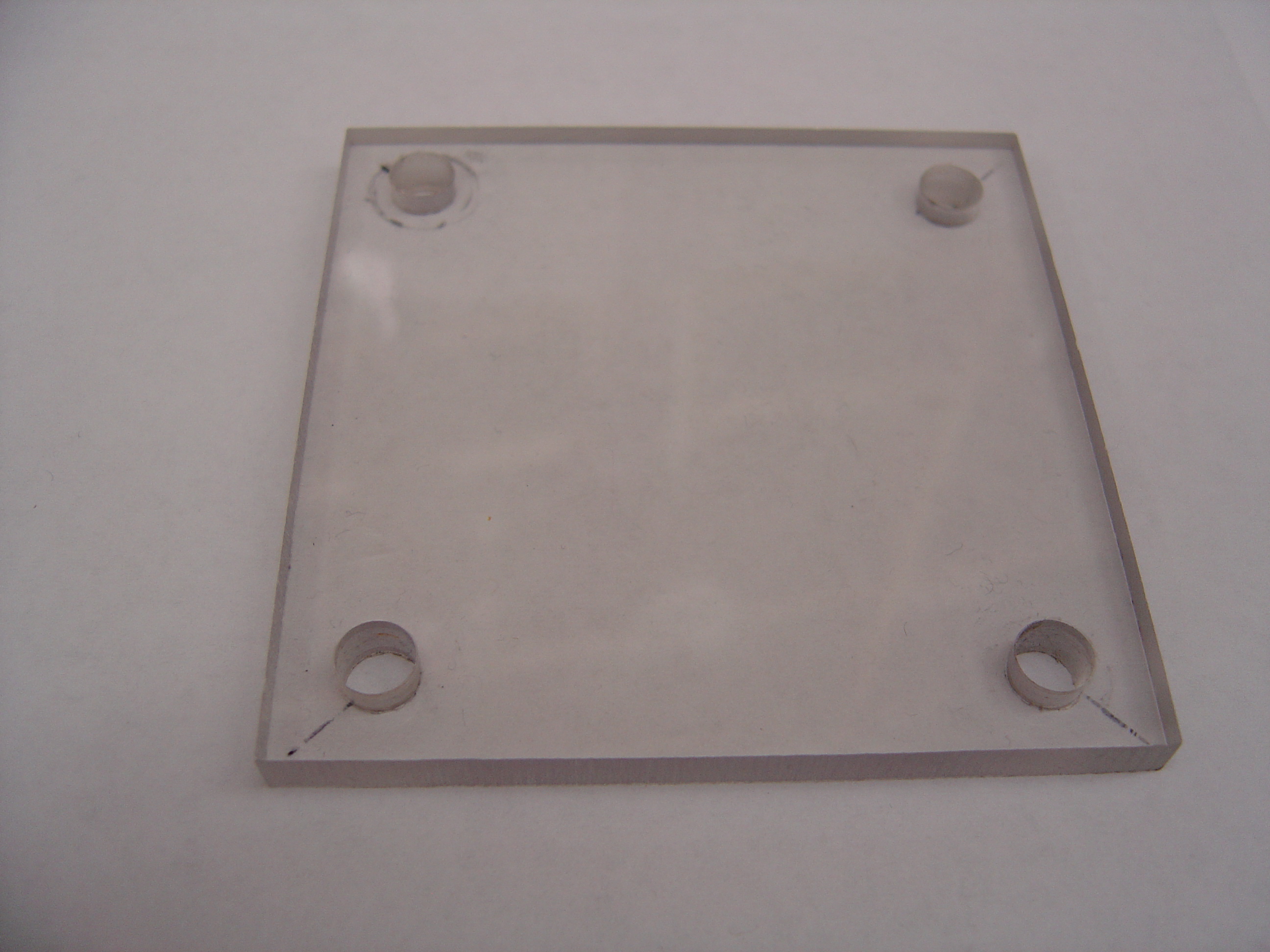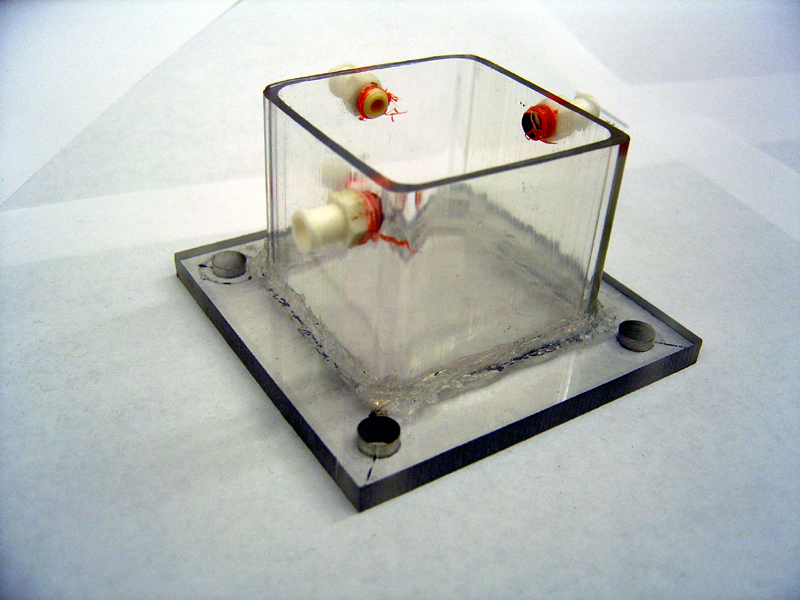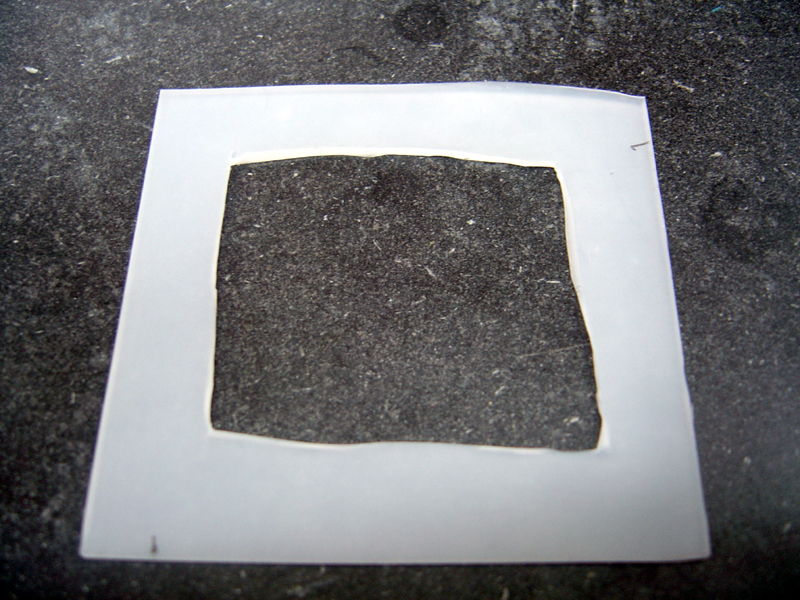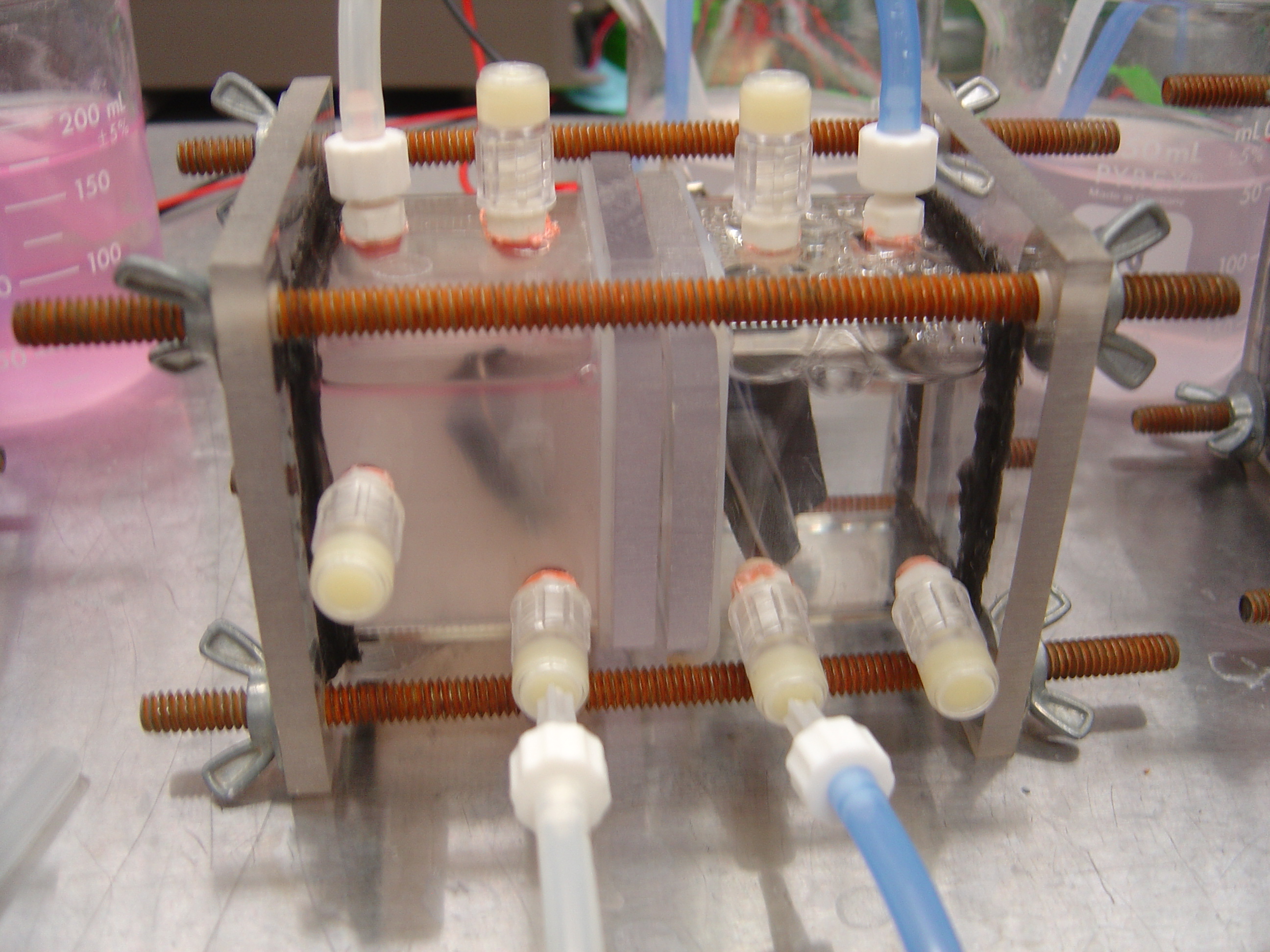Running an MFC Experiment
This page is intended as a comprehensive guide to completing a microbial fuel cell setup and running an experiment from start to finish.
Creating a Testing Environment
Begin 1-2 weeks prior to experiment
Constructing Fuel Cell Components
Materials (per fuel cell)
- 4" Polycarbonate Square Tube, 2" Outer Diameter
- 6" x 6" Polycarbonate Sheet, 1/4" Thick
- 4 Steel Fully Threaded Stud, 1/4"-20 Thread, 6" Length
- 8 Zinc Alloy Wing Flange Nut, 1/4"-20 Screw Size, 1" Wing Spread
- 1" x 1" Nafion® membrane, 0.180mm thick
- 1" x 1" Carbon felt, 0.25" thick
- 1.5" x 1.5" E-TEK ELAT™ GDE (platinum on carbon)
- 2' Titanium Grade 2 Wire .046" Diameter
- Teflon Tape, 1/4" Width
- 5" x 2.5" Silicone Sheet
- Silicone Glue
- Spiral Point Tap 1/4"-28
- 8 Plastic Luer Lock Coupling Nylon, Female to Male Thread, 1/4"-28
Procedure
- Mill Polycarbonate
- Cut polycarbonate sheet into 4 equal 3" x 3" pieces
- Drill four 3/8" holes through each piece, 1 per corner, indented 5mm from both sides

- Cut polycarbonate tube into two equal 2" halves
- Drill four 1/4" holes through each half in configuration shown

- Tap each hole with 1/4" -28 spiral tap
- Glue Chambers (repeat for each half)
- Center tube on endplate by marking plate with 'X' from corner to corner
- Squirt 2mm thick line of silicone on edge of tube (edge furthest from holes)
- Press tube firmly against marked location on endplate
- Quickly spread excess silicone along edge
- Let stand 24h to harden

- Construct Gaskets
- Cut silicone sheet into two equal 2.25" x 2.25" pieces
- Cut out centered inner squares in each piece, 1.75" x 1.75"
- Using inner squares, cut two 'O' rings, inner diameter 1/4", outer diameter 1/2"

- Construct Electrodes
- Cut titanium wire into one 8" piece and one 16" piece
- Using pliers, shape anode and cathode as shown
600px
- Spear carbon felt with tip of anode titanium wire and wedge into frame
- Weave platinum carbon cloth through cathode titanium wire
600px
- Seal Injection Ports
- Wrap threads of all eight Luer Lock screws with 1' of teflon tape in opposite direction of screwing
- Screw Luer Locks into all tapped holes in both chambers

Setup of Measurement Device
Materials
- Keithley 2700 Digital Multimeter
- Keithley 7700 Multiplexer
- Small Breadboard
- Supply of insulted thin copper wire
- 470 Ohm resistors (one/fuel cell)
Procedure
- Wire Multiplexer
- Open multiplexer, note channels
- Cut two wire 18" wire leads per fuel cell
- Strip ends, place one wire in each screw terminal, screw tight
- Tape paired wires (two are attached to each channel) near non-attached ends and label
- Clamp wire bundles near back of device with provided plastic latch clamps
- Close Multiplexer and slide into 2700 DMM
- Create Resistor Array
- Connect resistors across middle of breadboard (one per fuel cell)
- Connect leads from multiplexer across resistors (one pair across each resistor)
Controlling the DMM with LabVIEW™
- Initialize Multimeter
- Attach 2700 to COM1 port of desktop computer w/ LabVIEW™
- Download our LabVIEW™ source code MFCs.vi
- Open Program in LabVIEW™,
-
Experiment Preparation
Begin 1 day prior to experiment
Assembling Chambers
Solutions Prep
Chamber media
- 5.844 g/L 100mM NaCl
- 15.1185 g/L 50mM PIPES (hydrogen)
7.0 pH
Phosphate buffer
- 2.918 g/L Monosodium phosphate, monohydrate
- 4.095 g/L Disodium phosphate, anhydrous
- 5.844 g/L 100mM NaCl
7.0 pH
Gas Tubing Assembly
Growing Strains
Runtime
Begin 2 hours prior to experiment
Bacteria
Fuel Cells
Injections/Variables
Clean Up
|
 "
"





